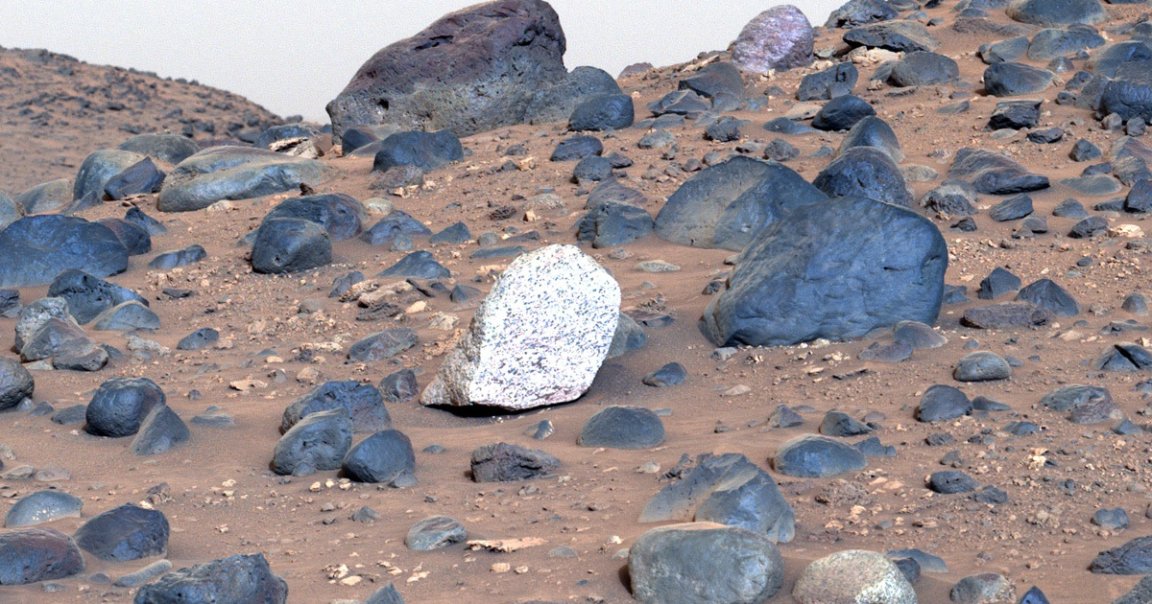
Stark Contrast
NASA’s Perseverance Mars rover took a shortcut to steer clear of a path riddled with boulders — and stumbled into a field full of stones the likes of which scientists have never seen before on the Red Planet.
On its fourth campaign since landing three years ago, the tireless rover roamed its way through a dried-up river channel called Neretva Vallis that once fed into the Jezero Crater, the region of focus of Perseverance’s study.
After taking a detour through terrain more friendly to the rover’s AutoNav system, it came upon a hill covered in boulders that contained some, as NASA described it in an announcement, “of a type never observed before on Mars.”
One of them, as depicted in this composite image, really stands out: an almost pale boulder unlike any of the far darker rocks surrounding it.
The rock — about 18 inches wide and 14 inches tall — is literally “in a league of its own,” NASA wrote, and is so distinct that scientists were compelled to give it a nickname. So say hello to this latest Martian oddity, “Atoko Point,” which hints at deeper geological mysteries on this barren world.
Rock this World
Mars is called the Red Planet for a reason, and any deviation from its monochrome norm, geologically speaking, is significant. Upon closer visual inspection with the rover’s instruments, NASA scientists have found evidence that the boulder is made of minerals called pyroxene and feldspar, which suggest that it may have originated from an underground source of magma.
How Atoko Point got to the surface, however, is unclear. Because the boulder’s composition is so unlike its surroundings, other scientists on the Perseverance team believe it could have been carried there by flowing water, NASA said.
But according to deputy project scientist of the Mars 2020 mission Katie Stack Morgan, the finding could be even more of a blockbuster than what NASA’s release originally let on. The boulder’s composition means that it’s likely a type of rock called anorthosite, she told Mashable, which has never been seen on Mars before, though scientists have long suspected it to exist there. Because anorthosites are mainly found on Earth and the Moon, its presence suggests that Mars’ geology could parallel our world’s more than once believed.
“Seeing a rock like Atoco Point is one of these hints that, yes, we do have anorthosites on Mars, and this might be a sampling of that lower crust material,” Stack Morgan said. “If we see it later on in the context of other rocks, it can give us a sense for how the earliest crust of Mars kind of came to be.”
Either way, its existence means that there must be other rocks of its kind somewhere on the planet. So as Perseverance ambles onward, now its support team will be looking for any sign of where it originated from.
More on Mars: Scientists Intrigued By Almost Perfectly Circular Pit on the Surface of Mars